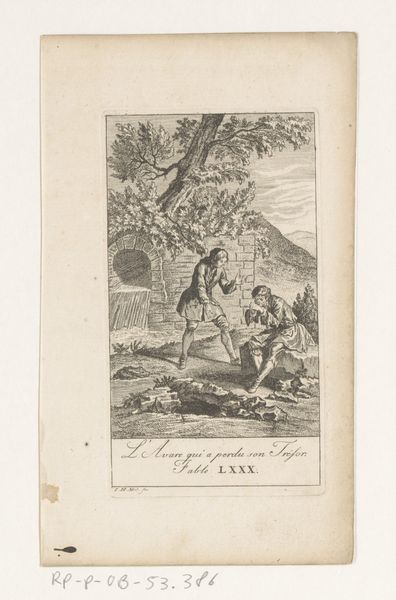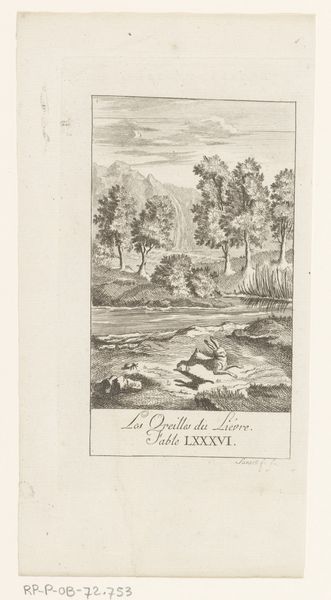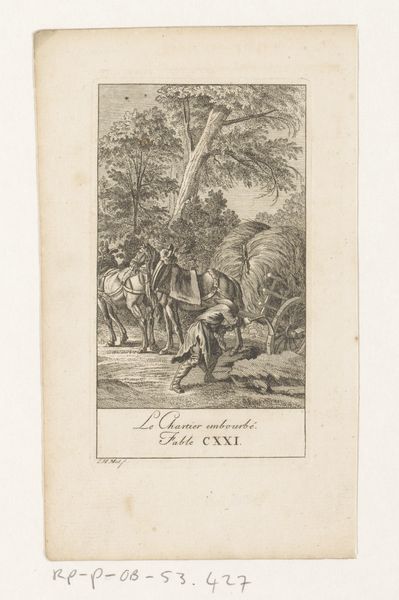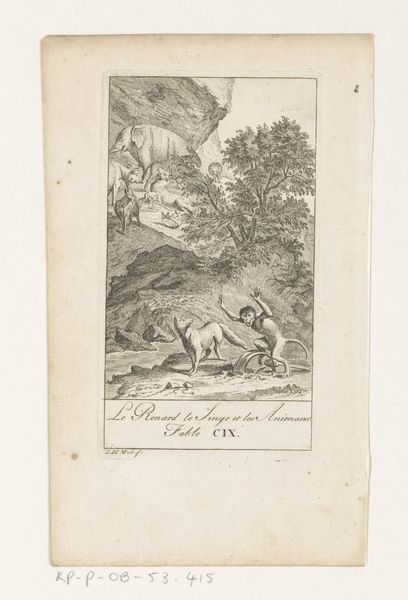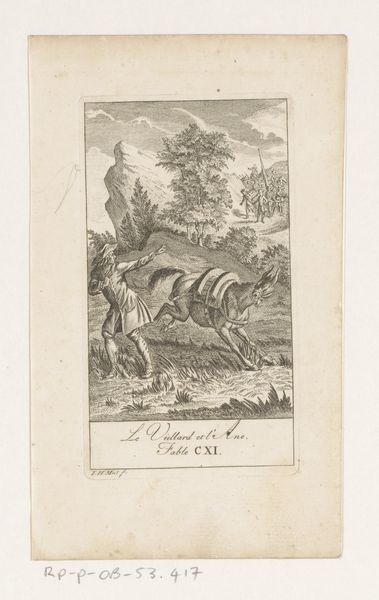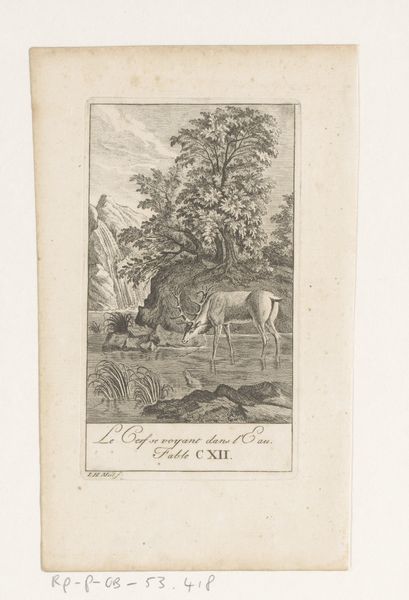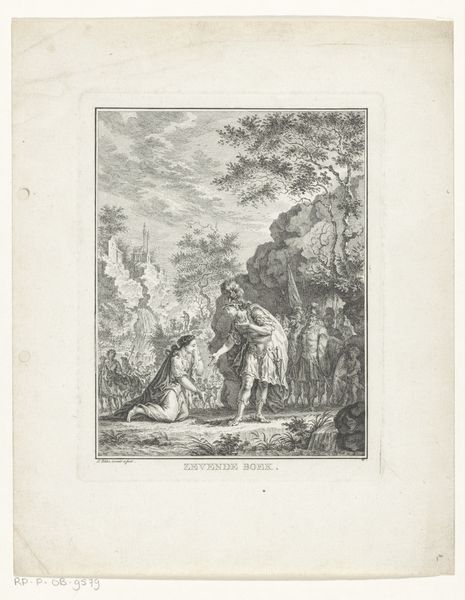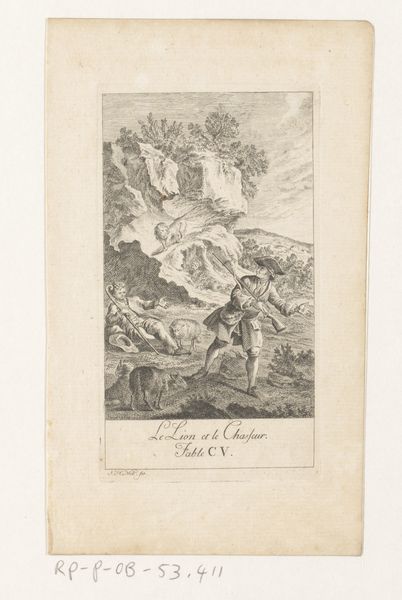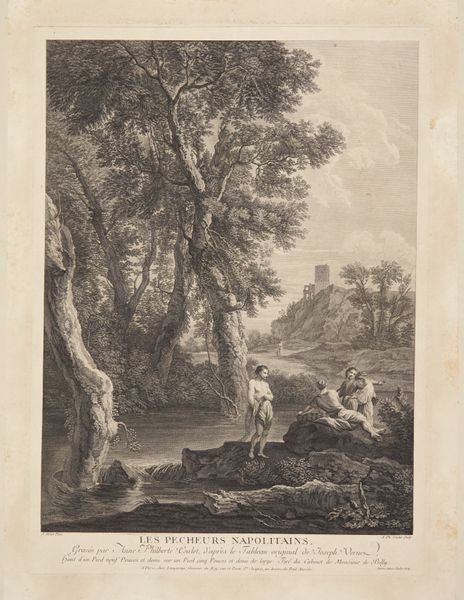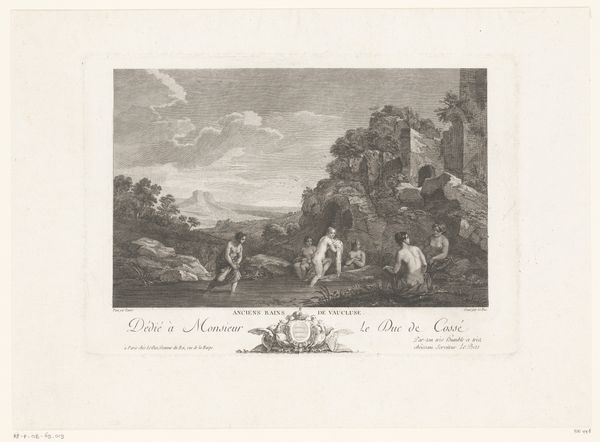
Fabel van de hond die zijn prooi voor zijn schaduw laat vallen 1758
0:00
0:00
print, engraving
#
baroque
#
animal
# print
#
pencil sketch
#
dog
#
old engraving style
#
landscape
#
genre-painting
#
engraving
Dimensions: height 142 mm, width 81 mm
Copyright: Rijks Museum: Open Domain
Editor: Here we have Johann Heinrich Meil's 1758 engraving, "Fable of the Dog Who Drops His Prey for His Shadow". The light and shadow are so striking, and the composition with the landscape receding into the distance feels very deliberate. What strikes you most about its visual qualities? Curator: The interplay of line and form creates a balanced composition, with the foregrounded dog serving as the focal point, meticulously detailed through the artist's controlled use of the engraving tool. Note how the formal aspects contribute to the image's overall narrative clarity. What do you make of the spatial arrangement? Editor: I notice how the landscape elements--the tower, the trees-- seem to frame the dog's dilemma in the water, creating a distinct sense of depth and separation. Is there more to glean from how the light is used? Curator: Observe how the artist uses light and shadow not just to describe form, but to heighten the dramatic effect. The stark contrast in values amplifies the sense of greed and folly exemplified by the dog, pushing him out as the key subject. Does that intentional construction influence your reading of the piece? Editor: It does. Focusing on form over content at first helped clarify the visual elements contributing to its overall narrative, like the lighting. I hadn't realized how much detail supported that thematic tension. Curator: Precisely! Through examining its formal aspects, we decode how Meil communicates that story effectively and aesthetically, wouldn't you agree?
Comments
No comments
Be the first to comment and join the conversation on the ultimate creative platform.


